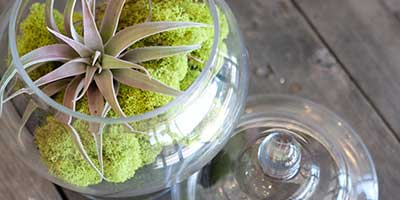Have you ever tried to give someone a message using flowers? Maybe you tried to say "I love you" with roses or "I'm sorry" with carnations. If so, you've been speaking the secret language of flowers. Find out why there is so much more to this language than meets the eye and learn how to use flowers to send unique messages of your own.
History of flower language
The secret language of flowers actually bears a rather formal name: floriography.
This language, or art form, as some would describe it, became popular during the Victorian era. At the time, different groups of flowers and formal floral arrangements were commonly used to send secret messages.
Many flower experts argue that the language of flowers dates back to antiquity. After all, scores of ancient cultures have histories that show flowers being used to demonstrate moral meanings. Many paintings of saints from the medieval and Renaissance eras include flowers as symbols of virtues. Victorian-era paintings also used flowers to describe moral lessons and spiritual truths.
The purpose behind the secrecy was to let individuals communicate feelings that couldn't easily be spoken publicly. For example, if two people fell in love despite deep divides between their social rankings or differences such as religion or ethnicity, they would turn to the secret language of flowers to convey their thoughts - a move quite preferable to risking public exposure for their feelings.
Tussie-mussies
Tussie-what? If you've never heard of Tussie-mussies, chances are you've at least seen some. Tussie-mussie is another name for a flower bouquet, which can also be called a nosegay or a posie.
Tussie-mussies have been used for centuries as a way to communicate the secret language of flowers and have since evolved into an art form. They've been around since medieval times and at one time served as popular fashion accessories.
Chances are good you've already seen a wide variety of Tussie-mussies being worn on special occasions in the form of corsages or boutonnieres.
Nowadays, Tussie-mussies (bouquets) are commonly seen at floral stores or grocery stores, available for a quick purchase for anybody who wants to say something special with flowers.
Forgotten nuances
In truth, the secret language of flowers includes much more than most people think. You probably already know the basics - like the fact that red roses demonstrate passion while yellow roses stand for friendship - but there's actually quite a bit more to the story.
Here are just a handful of flowers that remain connected to symbolic meanings:
- Acacia stands for concealed Love
- Amaryllis means both pride and pastoral poetry
- Azalea is a wish for you to take care of yourself
- Bachelor Buttons mean single blessedness
- Begonia mean to beware
- Bluebells represent humility
- Bouquet of Withered Flowers Rejected Love
- Cactus flowers stand for endurance
- Camellias show "I'm longing for you"
- Carnation Fascination
- Cattails mean peace and prosperity
- Coreopsis means always cheerful
- Daffodils stand for regard or unequalled love
- Daisies stand for total innocence and loyal love
- Forsythia shows anticipation
- Gardenia You're Lovely, Secret Love
- Garlic shows courage and strength
- Geraniums stand for stupidity and folly
- Gladioli say "I'm Really Sincere"
- Gloxinia denotes love at first sight
- Grass shows submission
- Heather stands for admiration and solitude
- Holly means both defense and domestic happiness
- Hyacinth shows rashness
- Hydrangeas mean thank you for understanding
- Pink Larkspur shows fickleness
- Call lilies stand for beauty
- Lily of the Valley denotes total sweetness
- Magnolias stand for nobility
- Mistletoe means, "Kiss me!"
- Moss shows maternal love and charity
- Myrtle is the Hebrew emblem of marriage
- Narcissus shows egotism
- Nasturtiums stand for conquest and victory in battle
- Oleander means caution
- Orchids denote refinement and beauty
- Palm leaves mean victory and success
- Peonies give cause for a happy life and marriage
- Petunias show resentment and anger
- Poppies stand for wealth and success
- Primrose show that "I can't live without you"
- Pink roses mean perfect happiness and please believe me
- Red roses, of course, mean I love you
- Tea roses mean I'll remember you always
- Rosebuds show a heart of innocence and love
- Smilax symbolize loveliness
- Snapdragons stand for deception
- Spider flowers ask, "Will you elope with me?"
- Stephanotis means happiness in marriage
- Sweetpeas mean good-bye or thank you for a lovely time
- Tulips are the symbol of the perfect lover
- Violet stand for watchfulness and faithfulness
- Zinnias denote lasting affection
So the next time you decide to give someone a gift of flowers, pay attention to the mean of the blooms you choose - you may be able to say so much more than you ever thought possible with one bouquet.




